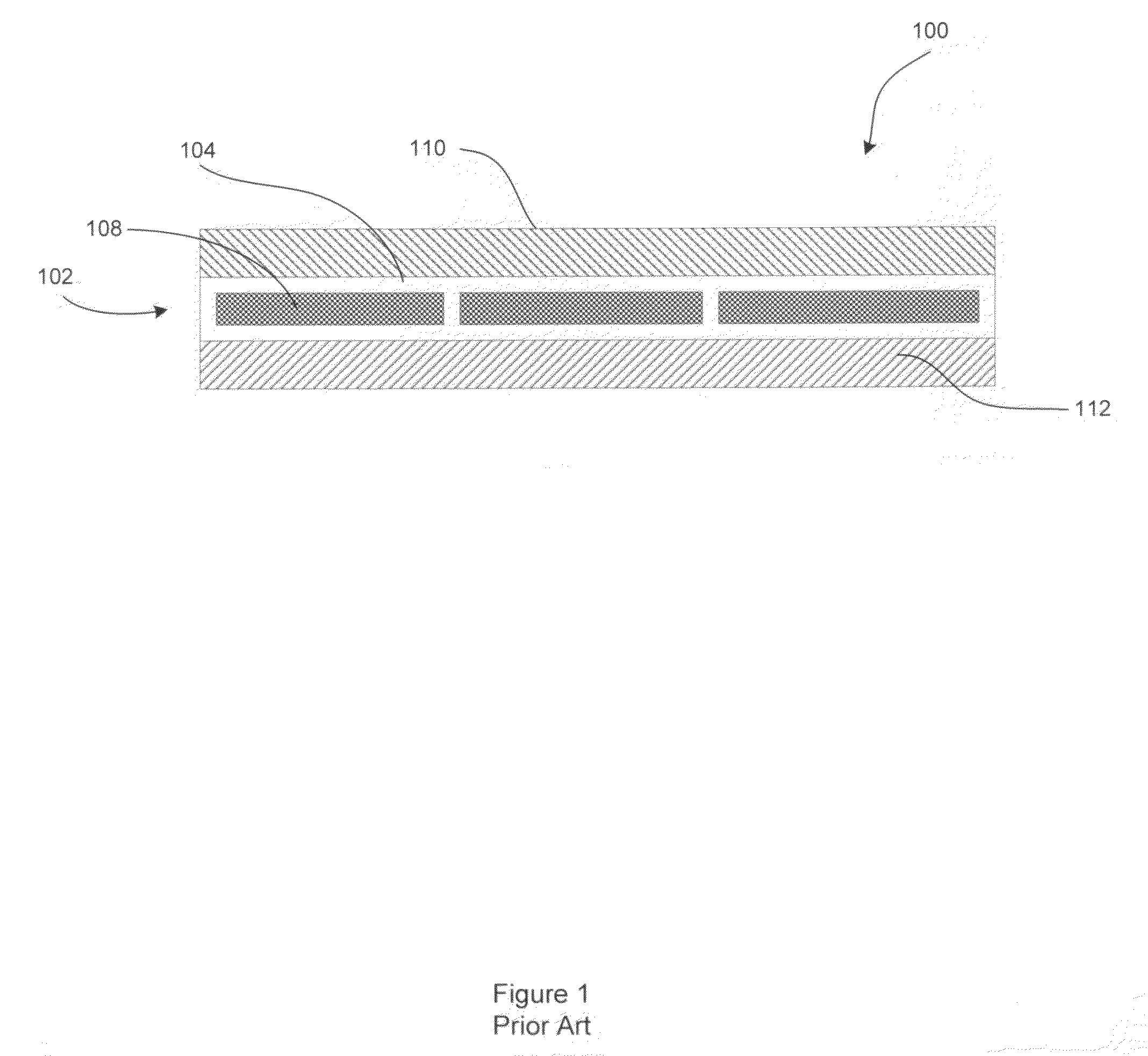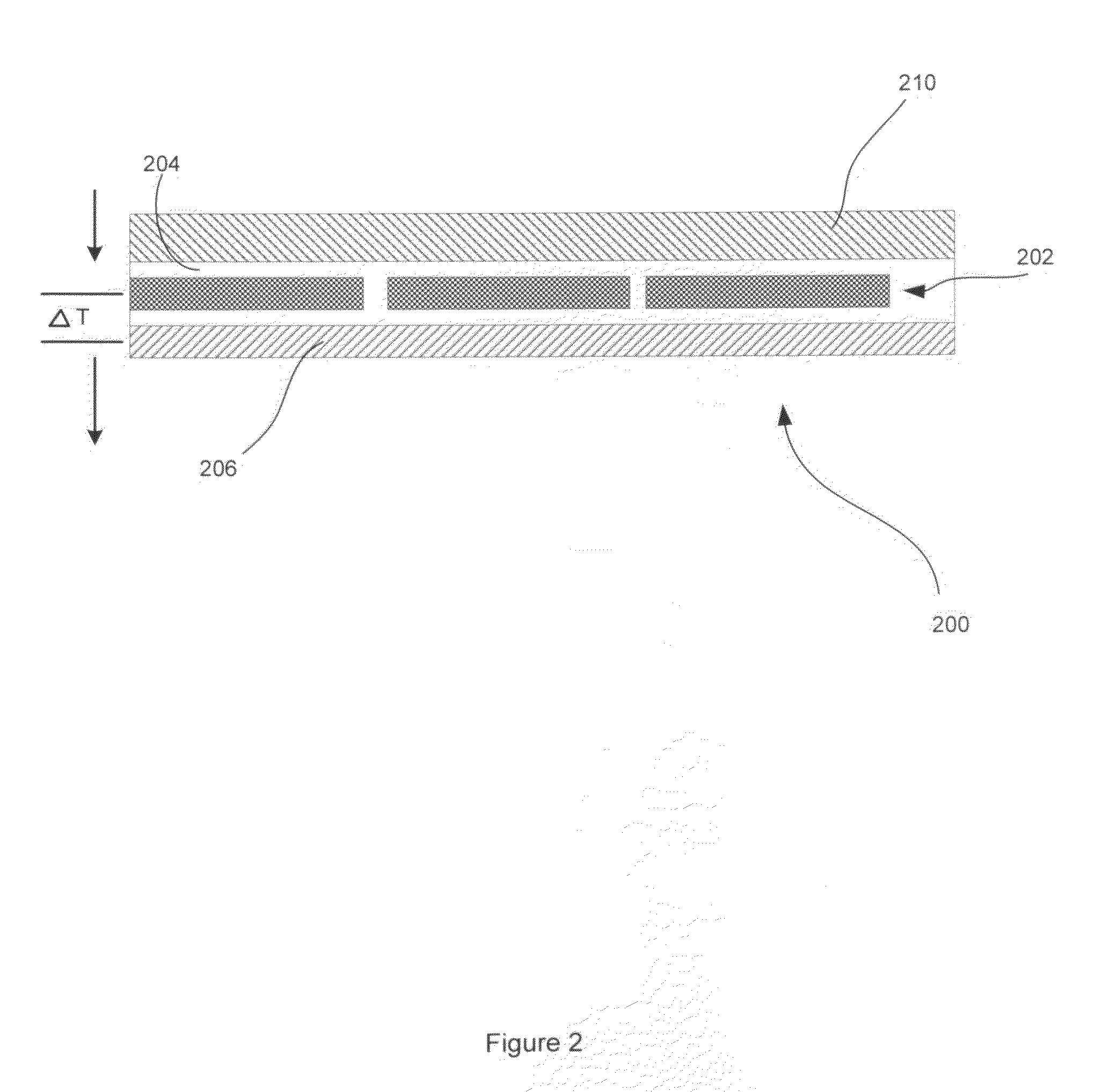Photovoltaic module containing a metal/polymer stack for enhanced cooling and reflection
a technology of photovoltaic modules and metal/polymer stacks, applied in photovoltaics, electrical devices, semiconductor devices, etc., can solve the problems of not being thermally conductive, not filling lamination materials, complex and expensive process, etc., and achieve the effect of improving the efficiency of silicon pv cell modules
- Summary
- Abstract
- Description
- Claims
- Application Information
AI Technical Summary
Benefits of technology
Problems solved by technology
Method used
Image
Examples
Embodiment Construction
[0024]Referring to the drawings, FIG. 1 shows a cross section of a conventional single crystal silicon (x-Si) or polysilicon (p-Si) module 100. Silicon module 100 comprises a plurality of PV cells 102 enclosed in a laminated plastic 104. Such x-Si and p-Si modules do not have back glass, but instead use a PVF back sheet that provides a moisture barrier.
[0025]The lamination plastic adjacent the light incident planes 108 of PV cells 102 is transparent. A front cover glass 110 is provided adjacent the transparent lamination plastic for protection against the elements. The backside of the lamination plastic is typically sealed with a PVF film 112 such as Dupont TEDLAR® or other fluoro polymer. Moisture penetration and condensation on the PV cells is responsible for the majority of long term PV module failures. The most vulnerable sites for moisture penetration are at the interface between the cells and encapsulating lamination material 104, and at the interfaces between the glass 110, l...
PUM
 Login to View More
Login to View More Abstract
Description
Claims
Application Information
 Login to View More
Login to View More - R&D
- Intellectual Property
- Life Sciences
- Materials
- Tech Scout
- Unparalleled Data Quality
- Higher Quality Content
- 60% Fewer Hallucinations
Browse by: Latest US Patents, China's latest patents, Technical Efficacy Thesaurus, Application Domain, Technology Topic, Popular Technical Reports.
© 2025 PatSnap. All rights reserved.Legal|Privacy policy|Modern Slavery Act Transparency Statement|Sitemap|About US| Contact US: help@patsnap.com



